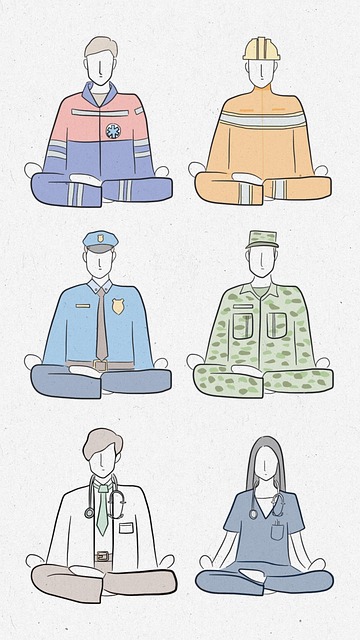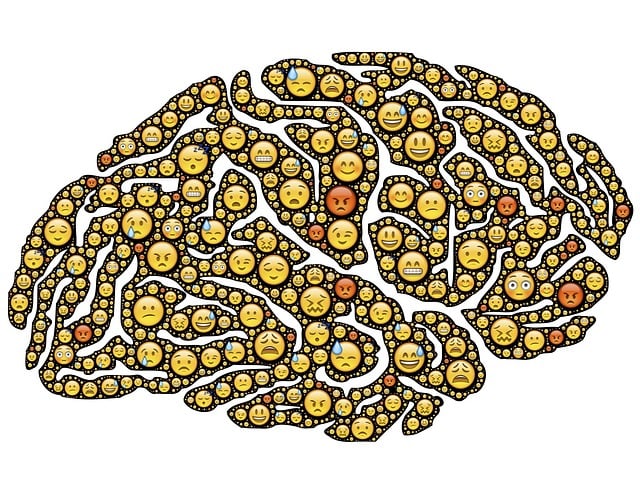Centennial Adjustment Disorder (CAD) is a hidden mental health challenge affecting younger generations' ability to cope with life transitions. CAD therapy takes a holistic approach, combining talk therapy, compassion cultivation, resilience-building, and positive thinking techniques to empower individuals. Mental health professionals play a crucial role in managing CAD through specialized treatments like cognitive-behavioral therapy (CBT) and evidence-based practices. Early intervention, stress management workshops, and fostering resilience are key components of effective CAD Therapy (CADT). Professionals are encouraged to continuously assess and develop their skills, integrate risk management planning, and promote cultural sensitivity to create safer therapeutic environments for both practitioners and clients.
Mental health professionals play a vital role in managing clients with Centennial Adjustment Disorder (CAD), a complex mental health condition. This article delves into a comprehensive risk assessment framework, guiding therapists in navigating CAD’s challenges. We explore the unique role of mental health experts in identifying and mitigating risk factors associated with CAD, ensuring safe practice. Through continuous assessment and professional development, therapists can enhance their skills, provide effective therapy, and improve client outcomes. Understanding and addressing CAD is crucial for successful treatment and long-term recovery.
- Understanding Centennial Adjustment Disorder: A Comprehensive Overview
- The Role of Mental Health Professionals in Managing CAD
- Identifying Risk Factors and Implementing Mitigation Strategies
- Continuous Assessment and Professional Development for Safe Practice
Understanding Centennial Adjustment Disorder: A Comprehensive Overview

Centennial Adjustment Disorder (CAD) is a complex mental health condition that often goes unnoticed, particularly among younger generations. This disorder manifests as a struggle to adjust and cope with life’s demands and transitions, leading to persistent feelings of anxiety, depression, or chronic irritability. CAD can significantly impact an individual’s ability to function in various aspects of life, including work and personal relationships. The roots of this disorder lie in the unique challenges faced by those who came of age during significant historical events or periods of societal change.
Therapy for CAD involves a multi-faceted approach that combines traditional talk therapy with specific practices designed to build resilience and foster positive thinking. Compassion cultivation practices, for instance, have shown promise in helping individuals with CAD develop a greater sense of self-compassion and understanding, which can be transformative. Resilience building techniques enable clients to navigate life’s stressors more effectively, while encouraging positive thinking helps shift focus towards more adaptive coping mechanisms. The ultimate goal of Centennial Adjustment Disorder therapy is to empower individuals to lead fulfilling lives despite the challenges they may face.
The Role of Mental Health Professionals in Managing CAD

Mental health professionals play a pivotal role in managing clients with Centennial Adjustment Disorder (CAD). CAD, characterized by difficulties adjusting to significant life events, often requires specialized therapy such as cognitive-behavioral therapy (CBT) or other evidence-based practices tailored to address the unique challenges faced by individuals with this disorder. Professionals must be adept at identifying subtle signs of distress and implementing early interventions to prevent escalation.
Effective management involves not just treating symptoms but also fostering resilience through stress management workshops, a key component within the scope of Mental Health Policy Analysis and Advocacy. By participating in these workshops, professionals can enhance their own coping mechanisms and better equip themselves to support clients navigating CAD. This holistic approach ensures that mental health professionals are well-prepared to handle complex cases, thereby improving overall client outcomes.
Identifying Risk Factors and Implementing Mitigation Strategies

Identifying risk factors is a critical step in ensuring the well-being of mental health professionals. This process involves a comprehensive assessment of various aspects of their work and personal lives, including workload intensity, client caseloads, exposure to traumatic content, and interpersonal dynamics within professional settings. By understanding these risks, therapists can proactively implement mitigation strategies tailored to their unique challenges.
One such strategy for mental health professionals struggling with Centennial Adjustment Disorder Therapy is focusing on self-esteem improvement techniques. Building resilience through therapy can enhance coping mechanisms, combat burnout prevention, and improve overall job satisfaction. Additionally, crisis intervention guidance plays a vital role in equipping therapists with tools to navigate high-stress situations, fostering a healthier work environment.
Continuous Assessment and Professional Development for Safe Practice

Mental health professionals must embrace continuous assessment and professional development as a cornerstone of safe practice. Regularly evaluating one’s skills, knowledge, and clinical techniques ensures that practitioners stay abreast of the latest research and best practices in their field, such as those related to Centennial Adjustment Disorder Therapy (CADT). This dynamic approach allows for immediate adjustments to treatment plans based on emerging evidence and individual patient needs.
Integrating Risk Management Planning for Mental Health Professionals is essential within this framework. By fostering emotional regulation skills among both practitioners and clients, cultural sensitivity in mental healthcare practice can be enhanced. Such ongoing vigilance not only mitigates potential risks but also fosters a more inclusive, effective, and empathetic therapeutic environment.
Mental health professionals play a pivotal role in managing Centennial Adjustment Disorder (CAD), requiring a comprehensive understanding of the condition. By identifying risk factors, implementing effective mitigation strategies, and engaging in continuous assessment and professional development, therapists can ensure safe and successful CAD therapy. This holistic approach not only benefits patients but also strengthens the overall mental health care ecosystem.









